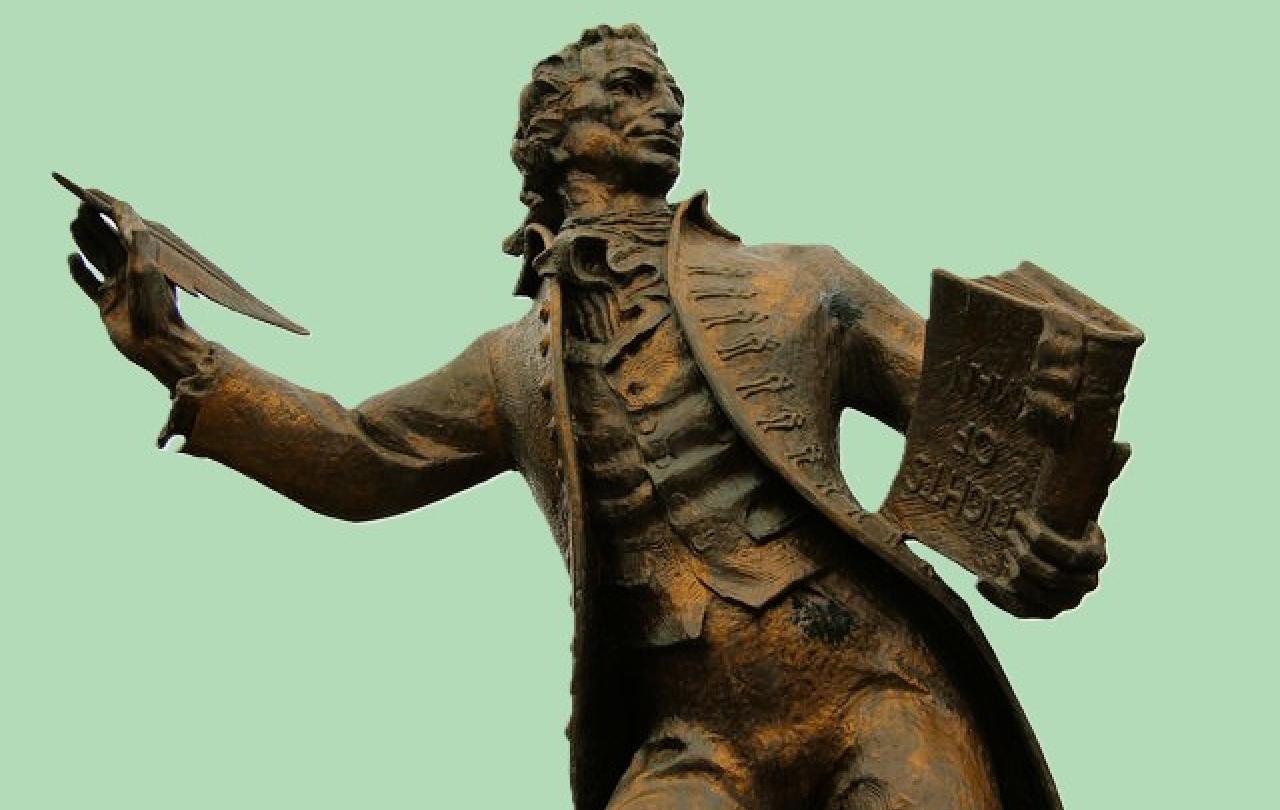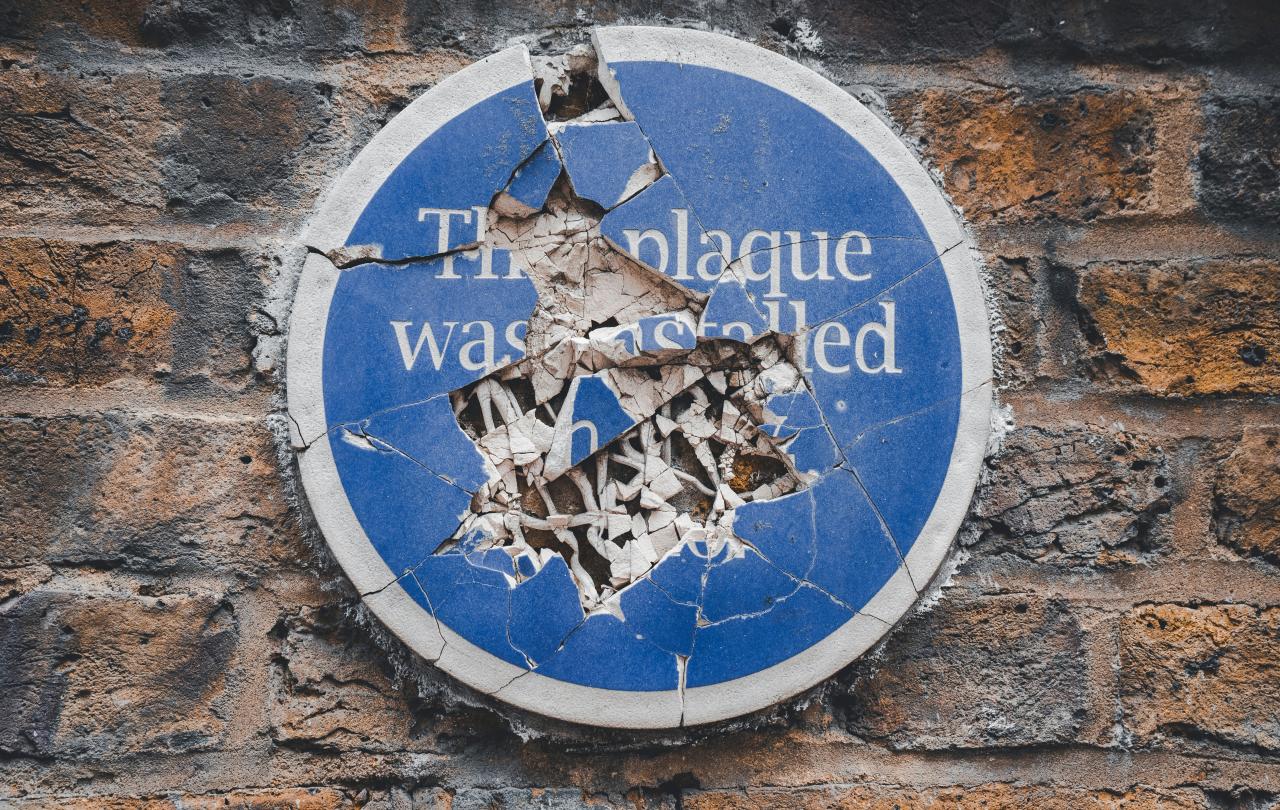This is the third in a series of articles clustered around the ideas of constitutionalism, Christianity and national identity. The first article set out the case for a new written constitution in order to protect against the authoritarian reactionary populism that threatens to undermine democratic norms and institutions. The second article made a distinction between England’s ‘metaphysical’ constitution and its ‘mechanical’ constitution – arguing that the former is in need of restoration, and the latter in need of thorough reform.
This article concludes with a plea for peace and unity. There is not much, in this increasingly febrile and polarised political climate, that left and right agree upon. Who is responsible for the mess we are in: the Romanians or the Etonians? Against whom should we direct our ire: the people in small boats in the Channel, or the people in big yachts in the Cayman Islands? Was Thatcher a hero or a villain? Was the purity of Brexit bliss betrayed by scheming Remoaners, or was leaving the European Union always going to be a disaster?
What we can agree upon, however, is that something is deeply broken. While we might disagree on the causes and the solutions, the unavoidable evidence of brokenness is before our eyes. In every area of daily life, things are – to use the most fitting vernacular expression – ‘a bit pants’. Perhaps things are not utterly dire, in the way that much of somewhere like Sudan or Burma is utterly dire, but they are nevertheless far from the standard that one might reasonably expect from the rich, first world, country we still claim to be.
Park life
Go, for example, to your local park, if there is one. Observe the broken glass, the graffiti, the used condoms, the discarded drug paraphernalia, the joyless air of bleak menace in a place that should be a happy sanctuary for children and families. If that description does not match your experience, perhaps you are one of the lucky ones, who lives in a good area – but many of your fellows, in dull decaying provincial towns, are much less fortunate.
Parks are just one manifestation of a land in the doldrums. One might just as well point to the fact that since privatisation water companies have not built any new reservoirs, or to uncollected rubbish piling up in the streets of Birmingham, or to the difficulty of getting an NHS dental appointment. Everything is tired, run down, threadbare, falling apart.
Those in charge, nationally and locally, are stretched between the irreconcilable demands of expanding needs and tight budgets. Engulfed by short-term crisis-management, they lack the ability to look up, grab the situation by the horns, and bring about the fundamental, structural and systematic change that is needed to actually fix things.
The decay is evident, too, in society at large. Employment, for those who can get it, is characterised by low wages and precarity. Housing costs are absurd. People at all levels have become exhausted, demoralised, bored and lacklustre, locked in an ‘overwhelm paralysis’. The public mood has become despondent, cynical, ineffectually angry, but also frightened. Many are grimly hanging on, just going through the motions to the minimal extent necessary to endure the week, and afford the month. Even basic civility and politeness have worn thin.
This is a far cry from a ‘Land of hope and glory’. Indeed, if one were to take honest stock of things, one might conclude that we live in a state where there is none righteous, and where all have sinned and fallen short of the glory of God.
Cobwebbed constitution
In making this sudden metaphysical turn – jumping from the decay, despondency and desperation evident around us, to the realm of the spirit – I do not wish for a moment to minimise the importance of such mundane human affairs as ideologies and policies. What government does and does not do, and what law allows or prohibits, matters. It should be no surprise that if governments leave undone those things which they ought to have done, and do those things which they ought not to have done, then there will be, at the end, ‘no health in us’.
Still less would I wish to neglect the role of institutions and structures – and, ultimately, the constitution itself. The woes we experience, in terms of bad policy and poor execution, are largely the result of an ill-constituted state. The words of Tom Paine (a man ill-remembered by history, but one of the few Englishmen to have understood the centrality of constitutional matters) are as true today as when he penned them more than two centuries ago:
‘For want of a constitution in England to restrain and regulate the wild impulse of power, many of the laws are irrational and tyrannical, and the administration of them vague and problematical.’
When it comes to mending a country in decline, the first thing to do is to make sure the constitution is sound, and that the institutions of democracy and governance work as they should. Behind all the policy and governance failures, of both Conservatives and Labour, lies the fact that we are governed by the cobwebbed remains of a once mighty commercial imperial state, now hollowed out by neoliberalism, without any clear ethical principles to direct or sustain it. To expect good outcomes from such an ill-constituted state would be as absurd as expecting to gather figs from thorns, or grapes from briers.
We might even put it in these terms: Every good constitution brings forth good government; but a corrupt constitution brings forth evil government. A good constitution cannot bring forth evil government, neither can a corrupt constitution bring forth good government.
Constitutional renovation has therefore become a precondition for the restoration of the legitimacy, credibility, authority, and moral integrity of the state, as well as for the health, well-being, and prosperity of the people. This calls for quite a different project of national renewal from that offered by offered by the parties of the reactionary right. Simply turning back the clock, closing the gates, and putting up more flags, is not the answer.
Governo largo
The centrepiece of a national renewal project should be constitutional: to create a truly ‘public state’ – a democratic state founded upon, oriented towards, and capable of serving, the common good. Tend to that tree, water its constitutional roots, and the fruits will follow.
Again, Paine tells us what the fruits of that good tree are, and therefore how to recognise when the constitutional tree is healthy:
‘When it shall be said in any country in the world, my poor are happy; neither ignorance nor distress is to be found among them; my jails are empty of prisoners, my streets of beggars; the aged are not in want, the taxes are not oppressive; the rational world is my friend, because I am the friend of its happiness: when these things can be said, then may that country boast its constitution and its government.’
This is little more than a restatement of the basic Aristotelean distinction between good and bad government. Good government (the well-constituted state, or ‘polity’) governs in the public interest, for the common good, while all forms of bad government – tyranny, oligarchy and populism – govern in the private interests of the rulers, perverting public power for personal gain.
The renaissance Italian statesman, Francesco Guicciardini, highlighted this distinction in clearer, more binary terms. He contrasted the ‘governo largo’ with the ‘governo stretto’. A governo largo is a wide, open, broad-based government, in which power is broadly shared and publicly accountable, so that public life is centred upon public needs. It is system of government not only by and of the people, but also for the people. ‘Governo stretto’, in contrast, is a narrow, restricted, closed, private, self-seeking, public-ignoring state.
The first attempt at constituting a ‘governo largo’ in England was made during the Civil Wars, with the ‘Agreement of the People’. This went through several drafts between 1647 and 1649. The title was well chosen. Real, working, constitutions are produced through a process of discussion and negotiation – ‘arguing and bargaining’ – that enables a broadly acceptable constitutional settlement to be reached. The constitution expresses what been agreed, amongst the people or their representatives, as the common foundation of the state.
Reaching such an agreement today, in a society that has become as polarised and divided as ours, will not be easy. It is nevertheless necessary. In order to establish a state that serves the common good, we must have some agreed foundations, ground-rules, shared principles, upon which a general consensus exists. This alone can provide the basis for an inclusive, publicly-oriented, ‘governo largo’.
This is not a radical innovation. Almost every country which has become independent from the British Empire has adopted a democratic constitution as its supreme and fundamental law. In some cases – in India in 1950, South Africa in 1996, and Kenya in 2010 – a serious attempt was made to establish an inclusive ‘governo largo’ constitution. In so doing, they sought to heal deep divisions, to reach a broadly acceptable settlement, and thereby to make good government – and with it socio-economic development – at least possible.
Perhaps we think we are better than all that, beyond such constitutional trifles. Yet, the fact remains that our politics today – and our society today – look much more like those of India, South Africa and Kenya than, say, like those of 1950s England. Either we find ways to dwell together in unity, or we face the kind of civil breakdown which the ancients referred to as ‘stasis’, in which all notions of the common good and the public interest are abandoned in partisan, factional, sectarian or ethnic conflict.
Here then, we must return to matters of the spirit. A good constitution is necessary, but the best constitution cannot save us. A constitution might call us to liberty – to that political freedom which enables us, as responsible citizens, to exercise care for common things, through systems of representative and responsible ‘public government’, but that is not enough, unless we also cultivate the qualities of character to use liberty well and wisely.
Saint Paul enjoins us not to use liberty ‘for an occasion to the flesh’ – that is, to seek our own, selfish, corrupt or partisan ends. He warns us perils of stasis: ‘But if ye bite and devour one another, take heed that ye be not consumed one of another.’ He also points to that one solution by which the degeneracy of the state, and the corruption of the constitution, might ultimately be overcome: ‘all the law is fulfilled in one word, even in this; Thou shalt love thy neighbour as thyself.’
In other words, if we wish to seek the common good, to be well governed, to live in peace and unity, with freedom and justice, then we have to learn to love one another. Civic and political regeneration cannot ultimately be separated from regeneration of our souls.






